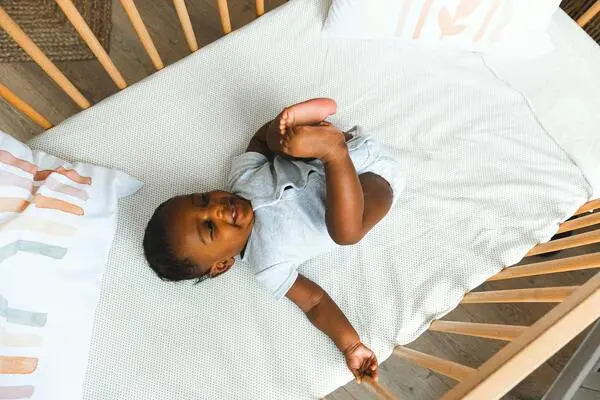- When Should I Move My Baby to Their Own Room?
- Understanding the Recommended Guidelines
- Is Your Baby Ready for Their Own Room?
- How to Transition Your Baby Smoothly
- Special Situations and Considerations
- Final Takeaway: Trust Your Instincts, Use the Science
- Bonus Tips for a Smooth Transition
When Should I Move My Baby to Their Own Room?
When should I move my baby to their own room? This question is on the minds of many new parents, and it’s an important decision that can affect your baby’s sleep, development, and sense of security. Deciding the right time to move your baby into a separate sleeping space can feel overwhelming. According to experts and research-backed guidelines, there is no single “right” time. However, by evaluating your baby’s developmental cues, sleep patterns, and family needs, you can make a confident and informed decision.
Understanding the Recommended Guidelines
The American Academy of Pediatrics (AAP) recommends room sharing — not bed sharing — for at least the first 6 months of life, and ideally up to 12 months. This guidance is based on evidence that room sharing significantly lowers the risk of Sudden Infant Death Syndrome (SIDS). However, other studies have found that room sharing beyond 4 months may actually reduce overall sleep quality for both parents and infants.
Is Your Baby Ready for Their Own Room?
There are multiple signs indicating that your baby might be ready for the big move:
- Age of at least 6 months
- Frequent nighttime wakings
- Increased parental sleep disruption
- Established self-soothing ability
- Outgrowing the bassinet or bedside crib
If these factors resonate with your current situation, transitioning your baby might be the right next step.
Developmental and Emotional Considerations
Research from attachment theory emphasizes that a secure base is essential for healthy emotional development. A caregiver who accurately reads and responds to a baby’s cues helps foster confidence and trust. The ability to anticipate your baby’s emotional responses during the transition can minimize stress and reinforce that secure attachment.
Sleep Quality and Independence
Studies show that babies sleeping in their own room after six months often experience longer, uninterrupted sleep stretches, which can improve development and mood. Transitioning supports the development of self-soothing skills and healthy sleep associations. White noise machines, blackout curtains, and familiar bedtime routines help build consistency and comfort in the new environment.
Creating a Safe and Nurturing Sleep Space
- Use a firm crib mattress with a fitted sheet.
- Keep the room temperature between 68-72°F (20-22°C).
- Avoid pillows, blankets, or plush toys in the crib.
- Add a night light and white noise machine to ease the change.
- Introduce your baby to the new room during daytime activities first.
These steps promote not only better sleep but also ensure compliance with safe sleep practices.
How to Transition Your Baby Smoothly
Begin with Daytime Naps
Start by having your baby nap in their own room. This helps them gradually associate the new environment with sleep, without the pressure of an overnight stay.
Stick to Your Routine
Maintain existing bedtime rituals such as a warm bath, gentle massage, feeding, lullabies, and dimming the lights. Familiarity and repetition create a sense of security.
Use Progressive Withdrawal
If your baby struggles with sleeping alone, try a gradual approach:
- Sit beside the crib until they fall asleep.
- Move the chair further away each night.
- Eventually leave the room before they fall asleep.
This builds confidence in both baby and caregiver.
Common Concerns and Myths
- “My baby won’t sleep alone.” Many babies adjust within a week. Consistency is key.
- “Isn’t it unsafe?” Not if you follow safety guidelines and ensure a proper sleep setup.
- “Won’t this damage our bond?” Encouraging independence while remaining responsive actually strengthens attachment.
Special Situations and Considerations
Babies With Health Conditions
For babies with medical concerns or specific support needs, the transition might need to be delayed. Always consult your pediatrician before making the move.
Parental Readiness
Don’t underestimate your own emotional readiness. It’s okay to wait a little longer if it gives you peace of mind — as long as you maintain safe sleep practices.
What If You Have Another Baby on the Way?
It might make sense to move your older baby in preparation for a newborn. Begin the process a couple of months ahead to avoid sudden changes post-birth.
Final Takeaway: Trust Your Instincts, Use the Science
There’s no perfect answer to when should I move my baby to their own room, but science offers a helpful roadmap. Combine evidence-based practices with an understanding of your baby’s unique needs — and trust yourself. Parenting isn’t about perfect timing; it’s about responsive, loving decisions.
Bonus Tips for a Smooth Transition
To further support this change, keep the following in mind:
- Start the transition during a period when there are no major life changes (travel, teething, illness).
- Use your baby’s favorite blanket or sleep sack to create familiarity.
- Consider using a video baby monitor for added peace of mind.
- Stay patient — some babies take a few days, others need a few weeks to adjust.
Remember, flexibility and consistency can coexist. Your child is unique, and adapting your approach to their temperament is a sign of strong, sensitive parenting.
The following post may interest you
What to Do If My Baby Won’t Sleep at Night? Effective Strategies
Sources
Social Purpose and Pedagogy in the Baby Room of UK Nurseries: Exploring the What, How and Why of Working with 0–2 Year Olds
https://link.springer.com/article/10.1007/s10643-024-01792-9
TEACHING MINDFULNESS TO CHILDREN
https://scholarlypublishingcollective.org/psup/gestalt-review/article-abstract/12/1/75/287222
Maternal Sensitivity Scales

